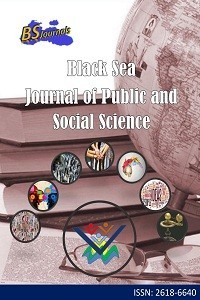Land use changes in natural resources and rural areas: Great threats for sustainable development in Iran
Land use changes in natural resources and rural areas: Great threats for sustainable development in Iran
Land use change, Natural resources, Rural areas, Vacation homes, Sustainable development Iran,
___
- Adhami M, Sadeghi SH, Sheikhmohammady M. 2018. Making competent land use policy using a co-management framework. Land Use Policy, 72: 171–180.
- Anghel AG, Draghicescu LM, Cristea GC, Gorghiu G, Gorghiu LM, Petrescu AM. 2014. The Social Knowledge - a Goal of the Social Sustainable Development. Procedia - Social and Behavioral Sciences 149: 43 - 49.
- Busoi SM. 2015. Sustainable development and the influence of social values, a case study on Romania. Proc Econ and Fin, 26: 46 - 53.
- Gandin J. 2012. Social perceptions of environmental changes and local development within the Usumacinta River basin. APCBEE Procedia, 1: 239 – 244.
- Iranian Bureau of Statistics. 2019. Statistical center of Iran. https://www.amar.org.ir/ (access date: 10.10.2019).
- Kathryn JH, Williams JS. 2012. Understanding the relationship between social change and its impacts: The experience of rural land use change in south-eastern Australia. J Rural Stud, 28: 538 – 548.
- Moein M, Asgarian A, Sakieh Y, Soffianian A. 2018. Scenario-based analysis of land-use competition in central Iran: Finding the trade-off between urban growth patterns and agricultural productivity. Sust Cit and Soc, 39: 557–567.
- Oyku Iyigün N. 2015. What could entrepreneurship do for sustainable development? A corporate social responsibilitybased approach. Proc - Soc and Behav Sci, 195: 1226 – 1231.
- Paulino ET. 2014. The agricultural, environmental and sociopolitical repercussions of Brazil’s land governance system. Land Use Policy, 36: 134– 144.
- Rouillard JJ, Reeves AD, Heal KV, Ball T. 2014. The role of public participation in encouraging changes in rural land use to reduce flood risk. Land Use Policy 38: 637–645.
- Shiel C, Leal Filho W, Paco AD, Brandli L. 2016. Evaluating the engagement of universities in capacity building for sustainable development in local communities. Eval and Prog Plan, 54: 123–134.
- Yayın Aralığı: Yıllık
- Başlangıç: 2018
- Yayıncı: Sevtap TIRINK
The Factors Affecting the Beef Consumer Price Formation in Turkey
Yurdakul SAÇLI, Hasan Gökhan DOĞAN
Ayşenur KÜREÇ, Güler KORKUT, Mutlu BULUT, Arzu SEÇER
Investigation of Workaholicism Role on Work Stress: Arçelik Authorized Services Case
Ethem MERDAN, Halil Özcan ÖZDEMİR
